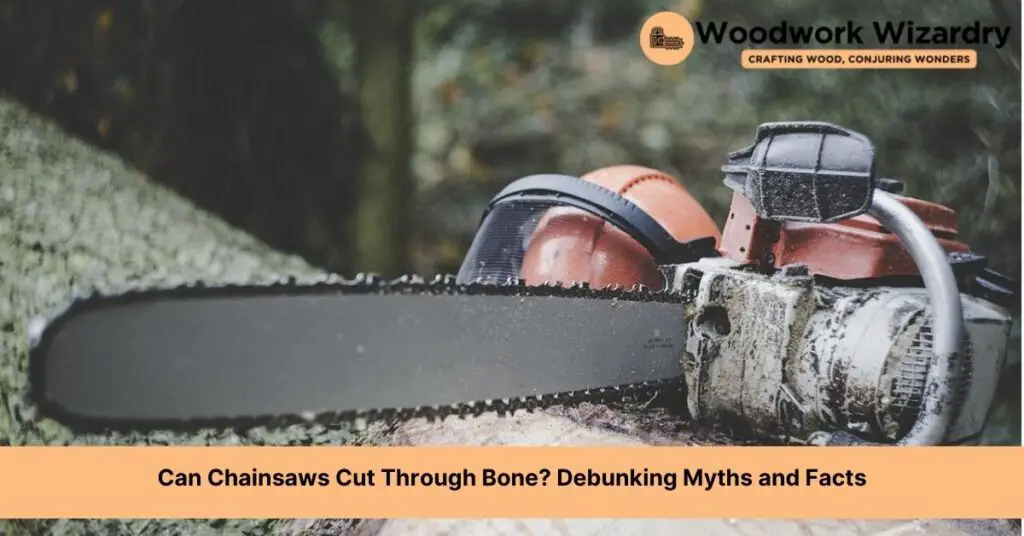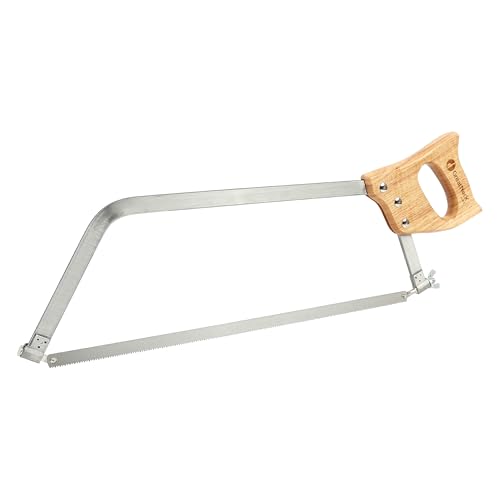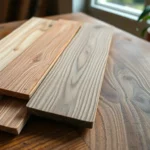In our quest to uncover the capabilities of everyday tools, we’ve stumbled upon a rather macabre question: can a chainsaw cut through bone? It’s not something we think about while trimming branches or cutting firewood, but it’s a question that sparks curiosity. Whether it’s for scientific research, medical education, or just plain old curiosity, we’re here to delve into the mechanics of how a chainsaw interacts with something as hard as bone.
Let’s face it, chainsaws are powerful tools. They’re designed to tear through wood with ease, but bone is a different beast altogether. It’s dense, tough, and presents a unique challenge. We’re going to explore what makes a chainsaw work and whether it has what it takes to cut through bone. Join us as we dive into this intriguing topic, shedding light on the capabilities of one of the most formidable tools in our sheds.
Understanding Chainsaws and Their Capabilities
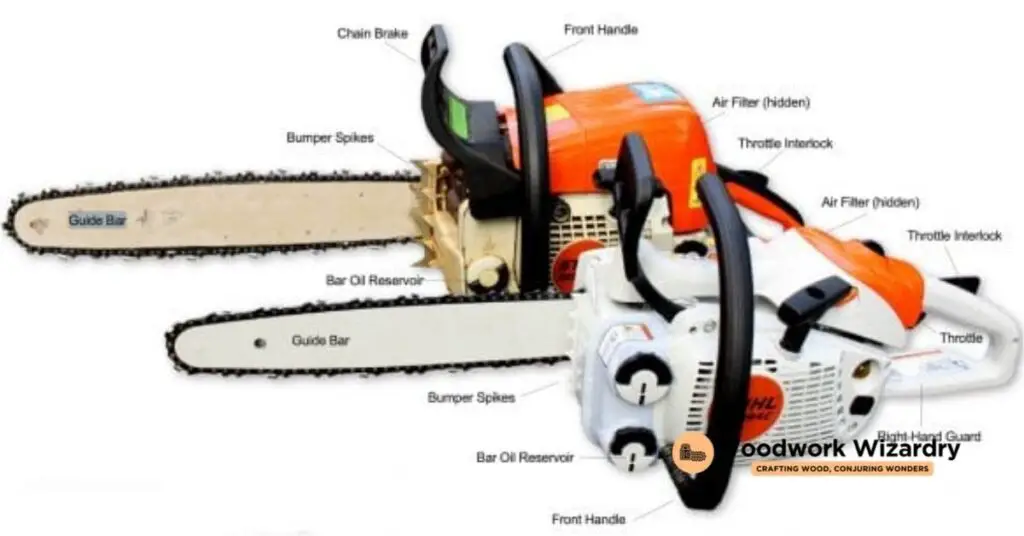
In diving deeper into whether a chainsaw can cut through bone, it’s crucial to understand the make-up and operation of chainsaws. These tools are specifically designed for cutting through materials like wood, which is fibrous and less dense compared to bone. Chainsaws operate through a series of teeth mounted on a rotating chain, powered by either gasoline or electricity. The efficiency of a chainsaw in cutting through wood lies in the sharpness of these teeth and the power behind their movement.
The design of a chainsaw’s teeth, typically made from hardened steel, allows for rapid, aggressive cuts. These teeth are arranged in a sequence along the chain, each playing a significant role in the cutting process. Some teeth work on chipping away at the material, while others are responsible for clearing out the debris, ensuring a smooth, continuous cut.
When comparing the capabilities of a chainsaw to the challenge of cutting through bone, several factors come into play. Bones are much denser and harder than wood, presenting a significant challenge. However, the power behind chainsaws, especially those with high horsepower ratings, cannot be underestimated. The force exerted by a chainsaw is substantial, and when combined with the sharpness and design of the teeth, it could potentially cut through bone.
Yet, it’s essential to note that cutting through bone is not what chainsaws are designed for. Their teeth and the overall design are optimized for materials like wood, and using them on bone can lead to quicker dulling of the teeth, potential damage to the chainsaw, and even safety hazards. The cutting process, when applied to bone, might also be less efficient due to the material’s density, requiring more power and potentially causing more wear on the chainsaw over time.
Understanding these capabilities and limitations helps in assessing the practicality and risks involved in using a chainsaw for anything other than its intended purposes.
The Science Behind Cutting: Chainsaw vs. Bone
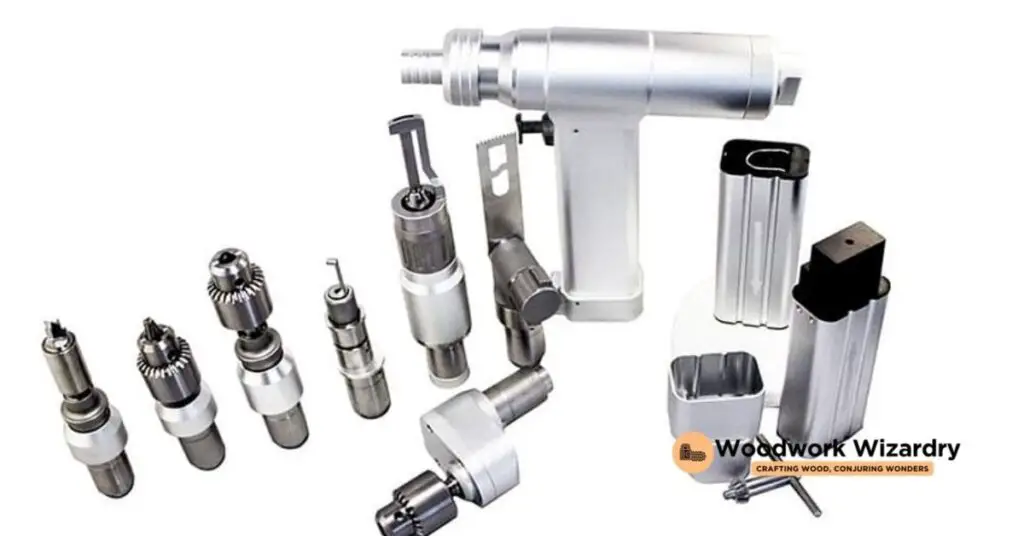
Following our discussion on the inherent challenges a chainsaw faces when confronting bone due to its density, we dive deeper into the scientific principles that govern this interaction. Understanding the science behind cutting helps clarify why a chainsaw, primarily designed for wood, struggles with bone.
Firstly, consider the material properties of wood and bone. Wood, being fibrous and less dense, allows chainsaw teeth to penetrate with relative ease. Bones, however, are a different story. Composed of collagen, calcium, and other minerals, bones boast a much higher density and toughness. This combination requires more force for effective cutting, a force that chainsaws, even with high horsepower, can struggle to provide without risk of damage.
Additionally, the cutting mechanism of a chainsaw involves a set of sharp teeth mounted on a rotating chain. These teeth are designed to tear through wood fibers, not to cut through the hard, mineral-rich structure of bone. When a chainsaw meets bone, the resistance encountered can lead to rapid dulling of the chainsaw’s teeth, reducing their efficiency. Moreover, the potential for kickback increases significantly when cutting through materials the chainsaw is not designed to handle.
The heat generated during cutting is another critical factor. When cutting wood, the generated heat is relatively manageable and doesn’t significantly affect the chainsaw’s operation. However, when attempting to cut through bone, the friction and subsequent heat can be much higher. This extra heat not only risks damaging the chainsaw but also poses a safety hazard to the user.
While the power and design of chainsaws make them formidable tools for cutting wood, the dense and tough structure of bone presents a significant hurdle. The scientific principles of material properties, cutting mechanisms, and the generation of heat during the process, all highlight the impracticality and risks of using a chainsaw for cutting through bone.
Comparing Chainsaws with Other Cutting Tools in Medical Fields
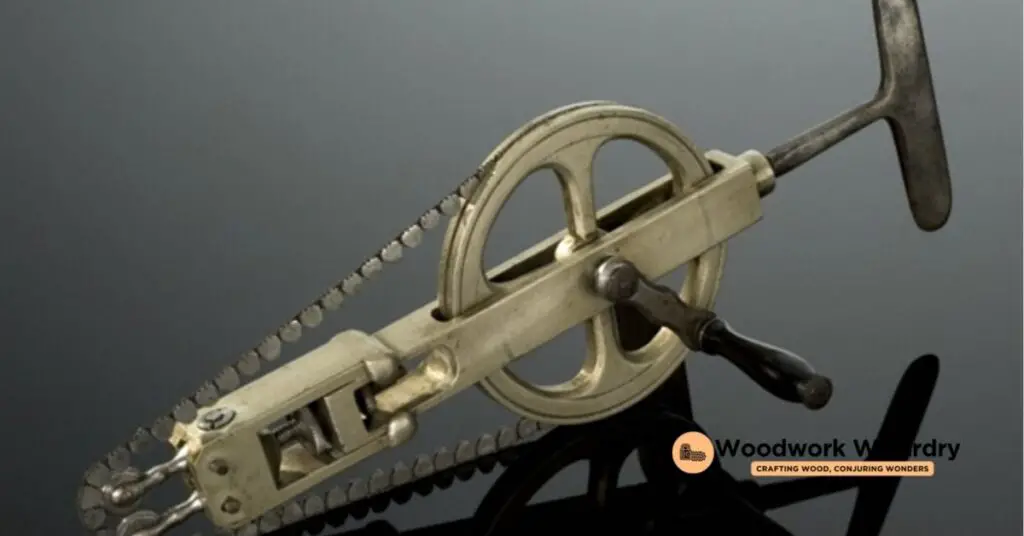
Transitioning from the consideration of chainsaws’ suitability for cutting through bone, it’s essential to compare these tools with other cutting instruments used in the medical field. Surgical tools, such as oscillating saws and bone cutters, are specifically designed to handle the density and toughness of human bones. These tools offer precision and control that chainsaws simply cannot match.
First, let’s talk about oscillating saws. These devices are staples in orthopedic surgery, allowing surgeons to make accurate and clean cuts through bone with minimal damage to surrounding tissues. Their small, fast-moving blades create less heat, reducing the risk of thermal injury—a significant advantage over the chainsaw’s high heat generation.
Bone cutters, including manual and powered variants, provide another comparison point. Manual bone cutters, like rongeurs and bone shears, offer direct control for the surgeon but require significant physical effort and skill for precise cuts. Powered bone cutters, on the other hand, combine the precision of an oscillating saw with the ability to cut through denser materials, though still within a controlled surgical environment.
In contrast, chainsaws lack the refined control and safety features necessary for medical use. Their large, aggressive teeth and the power required to drive them through wood make them unsuitable for the delicate work of cutting human bone. The risk of injury, both from the tool itself and from the potential for infection due to improper sterilization, further disqualifies chainsaws from medical use.
Thus, while chainsaws are powerful tools designed for cutting through tough materials like wood, their application in the medical field is vastly outperformed by specialized surgical tools. These tools, designed with human anatomy in mind, ensure patient safety, procedural efficiency, and optimal outcomes—objectives that chainsaws, despite their robust cutting capabilities, simply cannot achieve.
Legal and Ethical Considerations
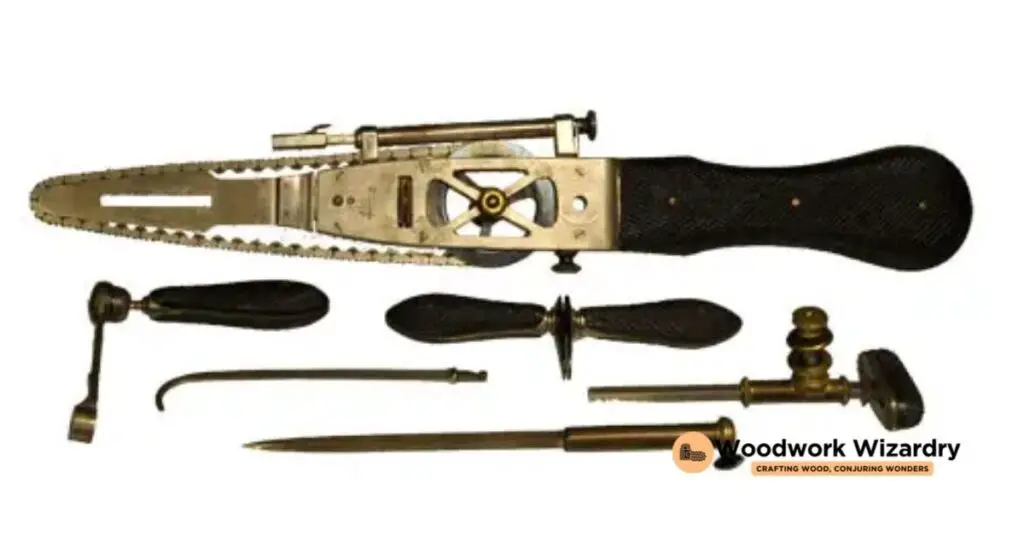
Discussing the use of chainsaws for cutting through bone necessitates a thorough understanding of the legal and ethical frameworks governing such actions. Firstly, it’s critical to acknowledge that the application of chainsaws outside of their intended use, especially in contexts involving human or animal tissues, is subject to stringent legal scrutiny. Legislation in various jurisdictions categorically prohibits the misuse of tools in ways that can cause harm to living beings or desecrate remains.
In the medical field, the adoption of tools and techniques is heavily regulated to ensure patient safety and adherence to ethical standards. Medical professionals are bound by a code of ethics that prioritizes patient welfare, necessitating the use of specialized equipment designed for specific medical purposes. The use of a chainsaw, a tool lacking precision and control for delicate operations like bone cutting, would not only be legally questionable but also ethically unacceptable.
Furthermore, ethical considerations extend to respect for the deceased. In forensic or archaeological contexts, handling human remains demands utmost respect and care, guided by legal and professional standards. Chainsaws, with their aggressive cutting action and associated risks of accidental damage, fall short of the gentle approach required in these sensitive applications.
Lastly, the legal ramifications of using a chainsaw inappropriately, especially in scenarios involving potential harm to humans or animals, include severe penalties. Criminal charges can result from negligence or intentional harm, marking a stark reminder of the gravity of adhering to legal and ethical boundaries in the use of any equipment, including chainsaws.
Collectively, these considerations underscore the importance of respecting legal standards and ethical principles in selecting tools for cutting through bone, emphasizing specialized medical equipment’s role in ensuring safety, precision, and dignified handling across various contexts.
Safety Tips When Using Chainsaws
Following the discussions on the impracticality and legalities concerning the use of chainsaws for cutting bone, it’s crucial to turn our focus to safety tips when operating chainsaws. While chainsaws are not suitable for cutting through bone, they are powerful tools for woodcutting tasks. Ensuring safety during their use is paramount to prevent accidents and injuries.
Wear Appropriate Safety Gear: Before starting a chainsaw, always wear protective clothing, including gloves, safety goggles, ear protection, and heavy-duty boots. Chainsaw chaps are also recommended to protect legs from potential cuts.
Read the Manual: Familiarize yourself with the chainsaw’s manual. Understanding the manufacturer’s instructions and safety guidelines is essential for safe operation.
Check the Chainsaw Before Use: Inspect the chainsaw for any loose parts, dull chains, or damage before starting. Ensure it’s in good working condition.
Maintain a Firm Grip: Always hold the chainsaw with both hands and maintain a firm grip. Properly handling the chainsaw aids in controlling its power and prevents accidents.
Be Mindful of Your Surroundings: Clear the area of any obstacles that might interfere with your movements. Also, be aware of people nearby to avoid unintentional injuries.
Never Cut Above Shoulder Height: Cutting above shoulder height increases the risk of loss of control and potential injury. Keep the chainsaw at waist level or below for optimal control.
Use the Chainsaw for Its Intended Purpose: As discussed, chainsaws are designed for cutting wood. Using them for other materials, like bone, is not only impractical but also unsafe.
Avoid Working Alone: Whenever possible, have someone nearby in case of an emergency. Having someone to call for help can make a significant difference in a crisis situation.
By adhering to these safety measures, users can greatly reduce the risk of accidents and injuries when using chainsaws for their intended purpose. It’s a reminder that understanding and respecting the intended use and operating procedures of powerful tools like chainsaws is not only a matter of efficiency but also of safety and responsibility.
Conclusion
We’ve explored the complex reasons why chainsaws aren’t suited for cutting through bone, from their design limitations to the legal and ethical barriers. It’s clear that while chainsaws are powerful tools for their intended use, their application in bone cutting is both impractical and inappropriate. We’ve also shared essential safety tips to ensure that when we do use chainsaws, we’re doing so responsibly and safely. Let’s remember to respect the tool’s intended purpose and the ethical considerations that come with it. By understanding and adhering to these guidelines, we can avoid unnecessary risks and honor the integrity of our work, whether it’s in a professional setting or personal projects.
Related Posts:
- Top Woods for Dremel Carving: Expert Picks & Tips
- Can Chainsaws Cut Through Bone? Debunking Myths and Facts
- Can You Dig a Trench with a Chainsaw? Safety & Efficiency Explored
- Staining Over Linseed Oil Finish: A Complete Guide
- How Long Does Wood Glue Take to Dry? Tips for Quick Drying
- Ultimate Guide: How to Stain Douglas Fir for Lasting Beauty
- Prevent Sap Leakage: Effective Wood Maintenance Tips
- Metabo C10RJS Review: Top Choice for Safety & Precision
- Choosing Between a Table Saw vs Miter Saw: Key Features Compared
- Top Picks for Best Plywood for Laser Cutting: Safety & Buying Guide
- Why Are Milwaukee Tools So Expensive? Unpacking the Premium Price
- Maximize Your Woodworking on a Budget: Tools, Tips, & Savings

